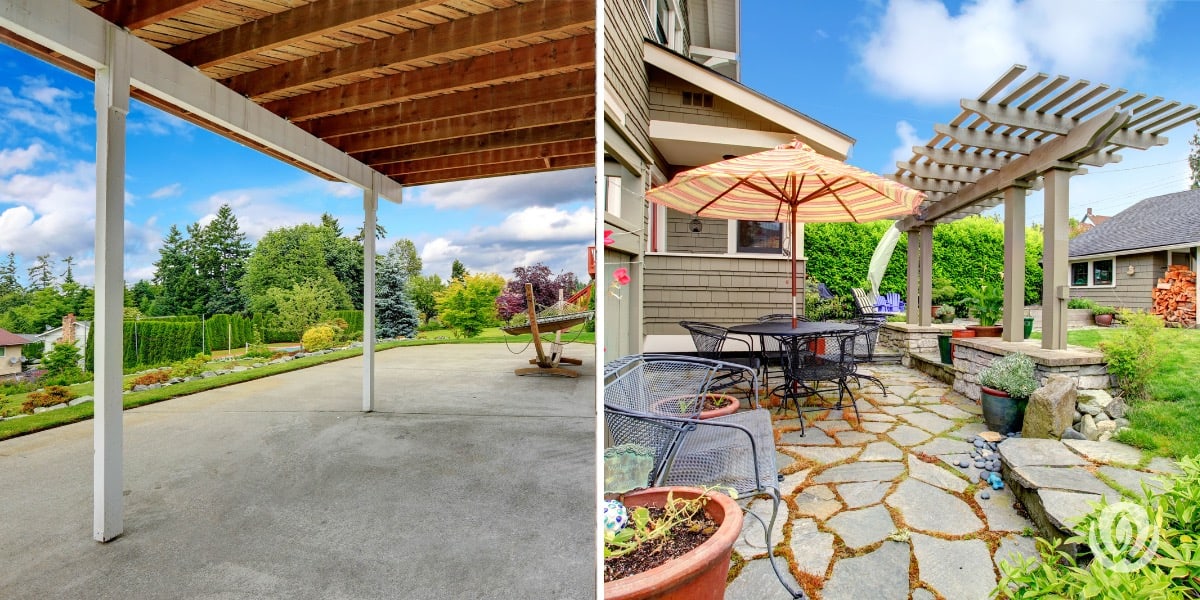
If you have an old cracked stamped concrete patio or a teensy-weensy patio, you may be looking to upgrade. When you’re planning an upscale patio, one of the major decisions is choosing concrete pavers and stone pavers.
We like them both, as do our clients. The decision of which material to use comes down mainly to two factors: taste and budget. Let’s take a look at the pros and cons of concrete pavers vs stone pavers, and you can decide what’s right for your project.
The concrete pavers of today look like natural stone, complete with color variations and texture variations within the same product line. Our go-to manufacturer is Belgard. Their pavers also coordinate with their retaining wall block, outdoor kitchens, fire pits, and more.
Here are the important pros and cons of concrete pavers:
Excavated from the earth, natural stone pavers can be laid in a patio as is, or cut into smaller pieces, depending upon the type of stone. Natural stone from this part of the country includes flagstone, quarry stone, Pennsylvania bluestone, and more.
Here are the important pros and cons of natural stone pavers:
You can have the best of both worlds and use a combination of the two. For instance, the majority of your patio or walkways could be concrete pavers, but you could use natural stone for a border or interesting inlay pattern. You can also incorporate boulders into your landscaping.
Whatever you decide, be sure to hire experienced outdoor living contractors who do the quality of work you expect.
Related Reading:
If you’re planning on getting a new patio and walkways this spring, we can help. We are now setting design consultation appointments for 2023. By setting up your consultation now, your project will get started as soon as the weather and ground conditions allow. We’ll listen to your needs and provide you with a patio design that fits your home and family, and sticks within your budget.
Check out our Portfolio for examples of our work, and to gain inspiration. We work with homeowners throughout the Capital Region, including Northern Virginia, Maryland, and Washington D.C.
"*" indicates required fields
